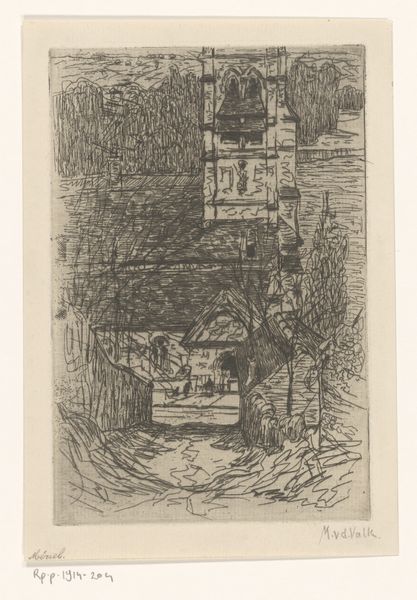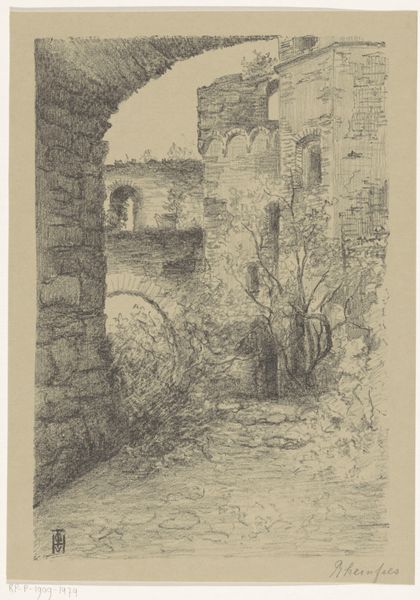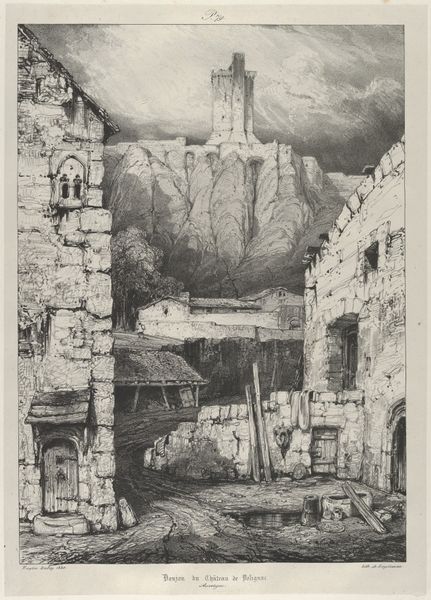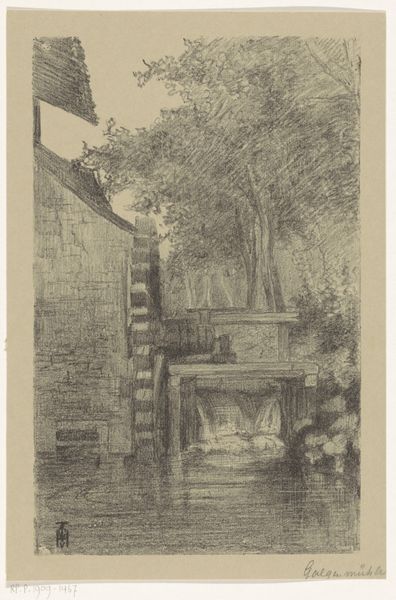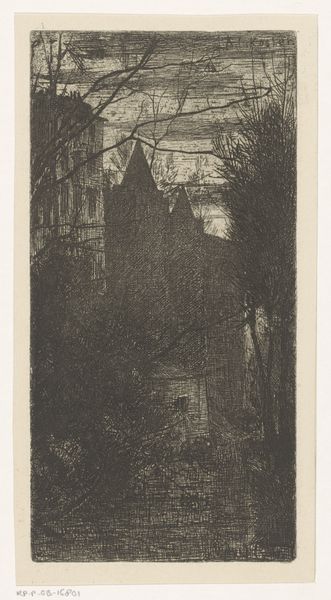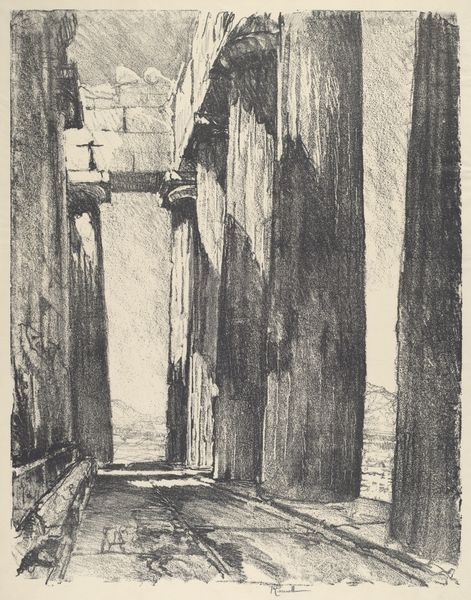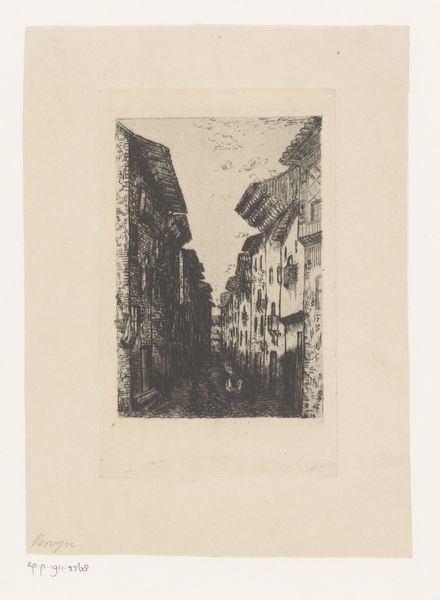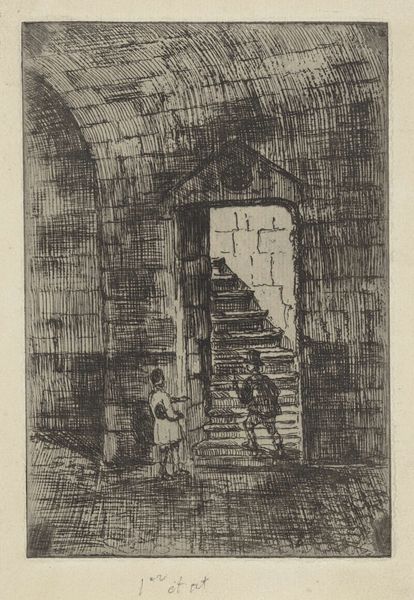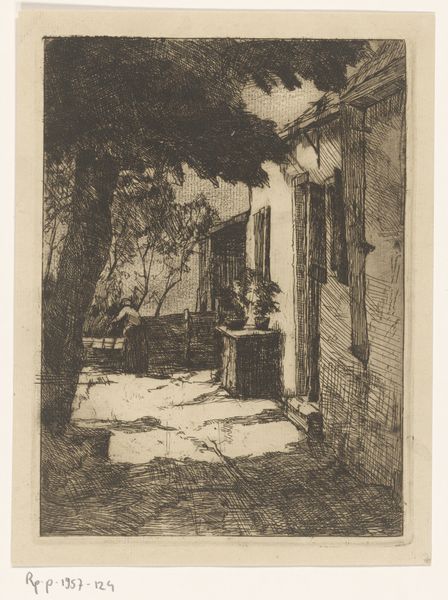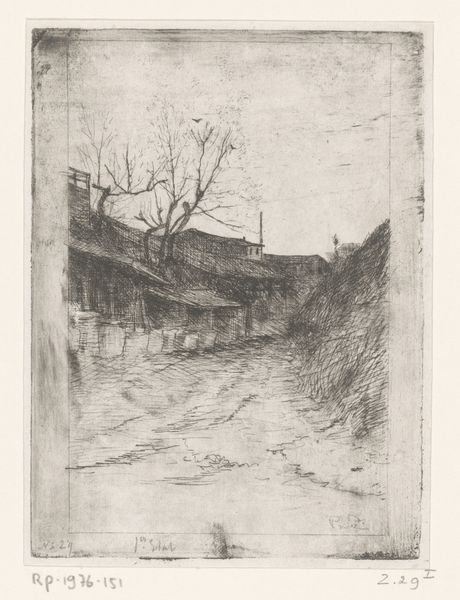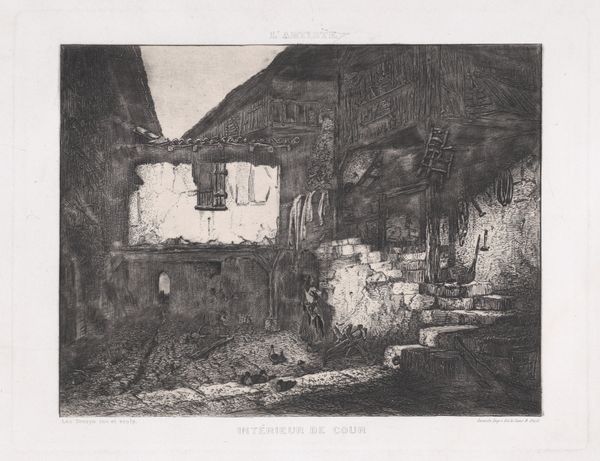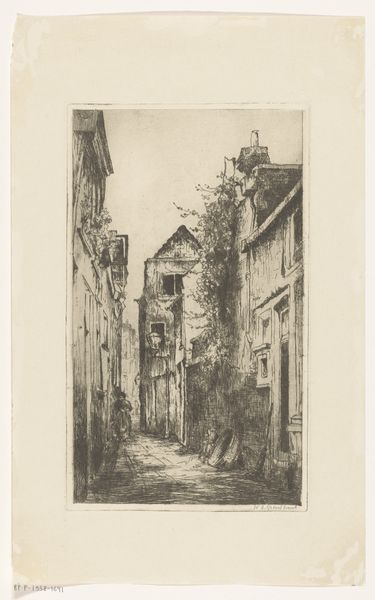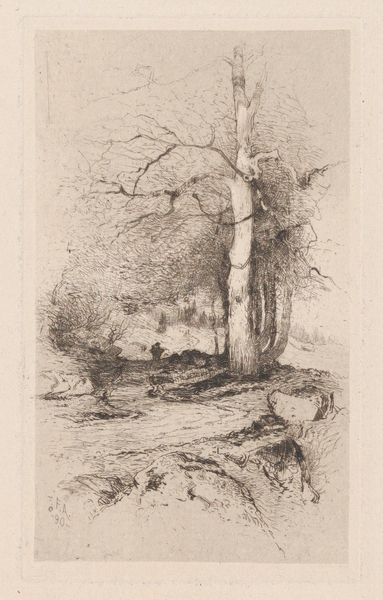
print, etching
# print
#
etching
#
cityscape
#
italian-renaissance
#
realism
Dimensions: sheet: 43.7 × 28.7 cm (17 3/16 × 11 5/16 in.) [irregular] plate: 23 × 13.8 cm (9 1/16 × 5 7/16 in.)
Copyright: National Gallery of Art: CC0 1.0
Curator: Looking at this etching, the somber mood really strikes me, as well as its dense compositions. Editor: Indeed. We're viewing Giovanni Fattori's "Bauco near Rome," created around 1904. This is a small, intimate cityscape rendered in etching. Curator: The contrast is masterful, dark lines forming walls of weathered buildings, seemingly clawing out of the landscape. I wonder what conditions gave rise to these scenes that evoke such a strong sense of age and history. Was it a nostalgia of the people or the government at the time that inspired Fattori? Editor: Well, post-Risorgimento Italy saw the rise of industrial centers drawing folks from their land, while others tried to hold onto traditional views. Images, even like Fattori's, gained increased currency, reinforcing these images of ideal societies or towns that existed outside industrial or centralized models. Curator: I see how the heavy texture and close, intimate framing emphasizes these values, almost suffocating the image and allowing the viewer to examine this space without any possibility of escaping the details in the frame. It becomes a document in support of an agenda. Editor: The perspective, with its rough staircase dominating the foreground, suggests a kind of descent—maybe into the past itself. The etcher has this quality in all his pieces, and the medium itself has the feel of uncovering memories. Curator: And there's that dramatic light. Its heavy application in this piece is strategic, casting such deep shadows. Editor: You're right, I hadn't quite perceived the dynamism you recognized until now! These sharp contrasts are a critical aspect of its composition and visual appeal. I’d thought initially the weight contributed to its grim qualities. Curator: Exactly! So, it's not just what's depicted but how it's rendered and for whom, suggesting that Italy, like its visual style, was undergoing seismic changes. Editor: Considering those social dynamics certainly adds another layer to appreciating the piece. I look at it now and notice just how present the themes of decline, dilapidation, and ruin are in Italian etchings like this. Thanks to your perspective, this picture has taken on a richer story.
Comments
No comments
Be the first to comment and join the conversation on the ultimate creative platform.
